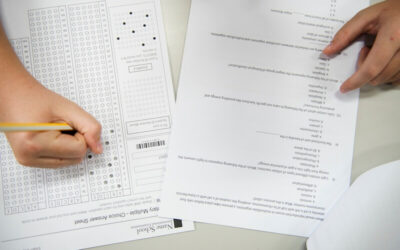
As school decisions are made, students and parents have to figure out how to pay. For most families (70%!), that means student loans. However, it’s likely that students and parents have lots more to learn about the basics of student loans. To that end, enter Vox.
Vox, which is an online news site, hires writers with specialties. One of their education experts, Libby Nelson, recently put together a very nice set of cards–think a FAQ/quick guide, but with robust, meaningful answers–on What is a Student Loan?
A student loan is money that banks or the federal government lend to students or parents to pay for higher education. Student loans can be used to pay tuition, fees and room and board, and they can also be used for living expenses and books. Student debt refers to the total amount of outstanding student loans from students, graduates, and dropouts.
The majority of students — more than 70 percent of all undergraduates — now borrow money to pay for college, a higher proportion than ever. Those students owe $29,400 on average at graduation. Student debt drew public attention and concern as the recession hit and graduates fell behind on their loans. There’s now a growing consensus among economists that student debt is a drag on the economy, too, because indebted graduates and dropouts have less money to spend on other things.
The federal government has by far the largest share of the student loan market. Until 2010, the federal government lent money to students by guaranteeing and subsidizing loans from banks like Sallie Mae. In 2010, the Education Department cut out the middleman and became the sole student lender.
Another quality card that will be helpful is What kinds of student loans are there?
There are two general types of loans: federal loans and private loans. Federal loans are issued by the Education Department. Private loans come from banks. Federal loans have some protection that private loans don’t, including more flexible repayment options and the possibility of eventual loan forgiveness. Neither kind is dischargeable in bankruptcy.
The Education Department makes the vast majority of student loans itself, directly to students, so they’re called direct loans. Since 2013, interest rates have been based on the 10-year Treasury bond rate, so they fluctuate from year to year.
Students are limited in how much they can borrow in federal loans. Dependent students can borrow no more than $31,000 during their college careers in direct loans, and no more than $23,000 of that amount can be subsidized. Independent students are limited to $57,000 total.
Direct Subsidized Loans for undergraduates. These loans are offered based on financial need and don’t accumulate interest while the borrower is enrolled in college. Interest rate for 2013-14: 3.86 percent.
Direct Unsubsidized Loans for undergraduates. These loans are available to undergraduates regardless of financial need, but interest accumulates while borrowers are in college, making the loan more expensive in the long run. Most subsidized loan borrowers also have unsubsidized loans. Interest rate for 2013-14: 3.86 percent.
Direct Unsubsidized Loans for graduate students. Same deal as for undergrads, but at a higher interest rate. For 2013-14: 5.41 percent. Graduate students can borrow up to $20,500 per year.
Direct PLUS loans. Graduate students and parents of undergraduate students can borrow up to the cost of attendance, which includes living expenses, at a higher interest rate. For 2013-14: 6.41 percent.
Perkins loans. These loans for undergraduates are based on financial need and are administered by colleges. Interest doesn’t accumulate while borrowers are in school. Interest rate for 2013-14: 5 percent.
There are many more cards in the set, with more to come. These Vox cards are all worth a read, and we strongly suggest parents and students alike check them out:
- How much student debt is out there?
- How much debt does the average student have?
- Why has student debt increased so much?
- How are federal student loan interest rates calculated?
- What colleges have the most student debt?
- How many people aren’t paying back their student loans?
- Why can’t student loans be discharged in bankruptcy?
- What is income-based student loan repayment?
- What effect does student debt have on the economy?
- Does the government make money on student loans?
- What’s the case for student debt?
- What are some proposals for reducing student debt?



